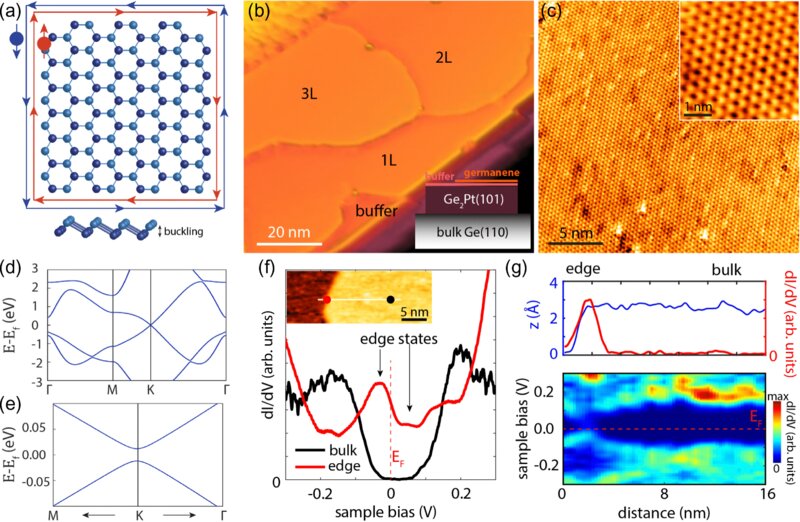Researchers at the University of Twente have discovered that germanene, a two-dimensional material made of germanium atoms, acts as a topological insulator. It is the first 2D topological insulator made of a single element and has the remarkable ability to switch between “on” and “off” states, making it comparable to transistors. This discovery could result in more energy-efficient electronics.
Topological insulators are materials that have the unique property of insulating electricity in their interior while conducting electricity along their edges. The conductive edges enable electrical current to flow without any energy loss. However, defects in the material increase resistance, leading to the loss of energy in the form of heat. As a result, electronic devices lose a lot of energy.
The researchers discovered that germanene has the ability to switch between “on” and “off” states. This is a unique property for a topological insulator, and it adds an exciting application case for germanene. The researchers also found that the scattering of electrons at defects is forbidden due to the topological protection mechanism at the edges of 2D topological insulators. This means that electrical current in 2D topological insulators flows without dissipating energy, making them more energy-efficient than current electronic materials.
Germanene is a 2D topological insulator that is unique because it is made of a single element. To create germanene, the researchers melted germanium together with platinum. When the mixture cooled down, a tiny layer of germanium atoms arranged into a honeycomb lattice on top of the germanium-platinum alloy. This layer of atoms is called germanene.
This discovery could pave the way for designing topological field-effect transistors that could replace traditional transistors in electronic devices. This could lead to electronics that no longer heat up, resulting in more energy-efficient devices.



Leave a Reply